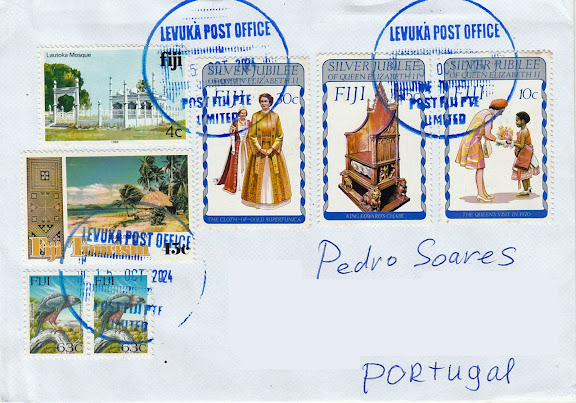POSTCARD N.170 - RUSSIA
Postcrossing Postcard sent on the 26th October, received on the 19th November 2024
Postcard image: A building in Novo-Sobornaya Square, Tomsk.
___________________________________________________________________________,
Siberia, the land of the cold...just out of curiosity I went and took a look at the day's weather report as I type: 17º C here where I live; - 2ºC in Tomsk..., well, not really cold for Tomsk's standards I presume, but I'm feeling warmer already....
Thank you Polina, for the very nice postcard of Tomsk.
Polina wrote me in Russian, so I had a bit of a difficulty in figuring out what she had written on the back of the postcard, but thanks to the Google translating app I could get it all clear... one just has to point the cellphone camera to the text and you get the translation on the screen....nothing short of amazing.
I also had a bit of difficulty identifying the building in the painting, but after some searching I managed to locate it in Novo-Sobornaya Square, a favourite place for city events, I read.
The stamps used on the postcard are all part of the first definitive issue (11JUN2029) of the series illustrated with the State Postal Administration Emblem.
Unfortunately, the Postmark is illegible but Polina tells me she lives in Nizhnevartovsk, so I presume that the postcard was mailed from there.


















